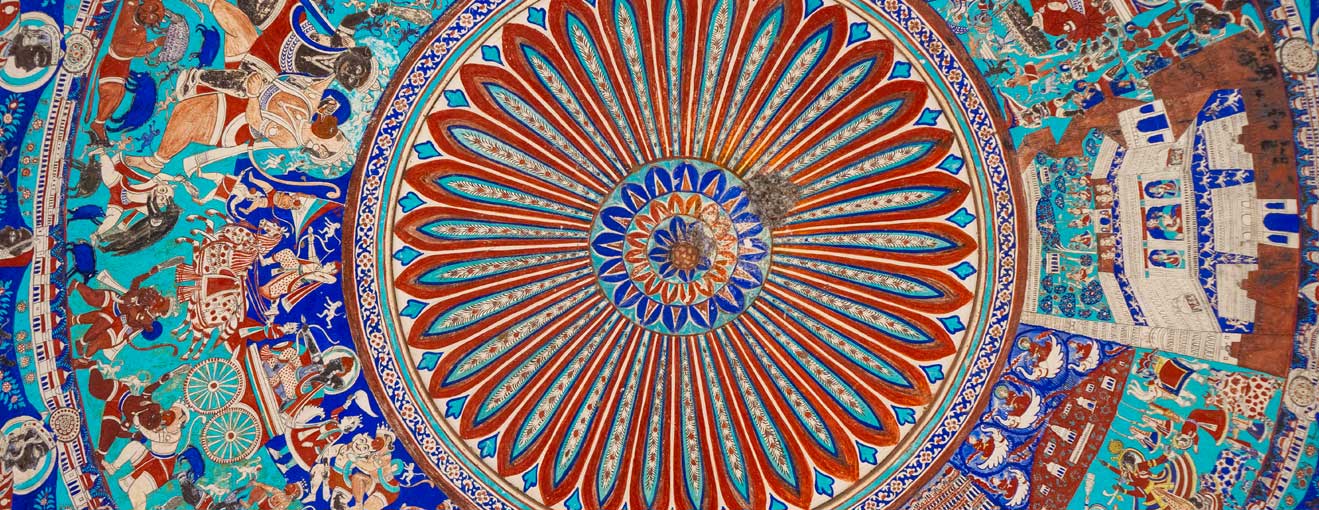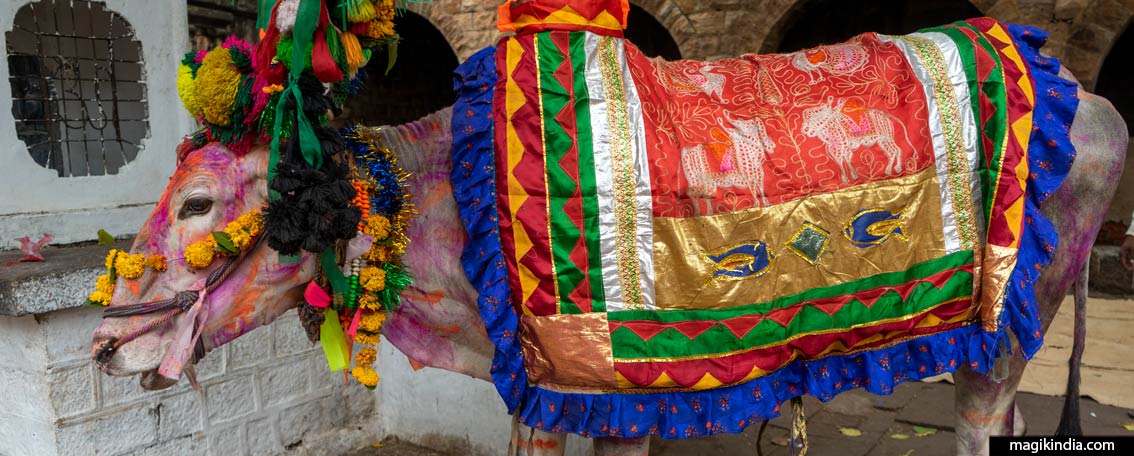
Pongal, the Tamil Thanksgiving to Nature
Pongal is the harvest festival, held in mid-January each year in thanksgiving to nature, the sun, the rain and working animals. Agriculture is of immense importance in India, so the harvest is a major event. It is believed that this celebration brings wealth and prosperity.
Where is Pongal celebrated?
The Pongal festival is widely celebrated in South India, especially Tamil Nadu where it is called Thai Pongal.
It falls on the first day of the month that is called Thai in the Tamul calendar. In Tamil Nadu it is said that “The birth of the month of Thai paves the way to new opportunities”.
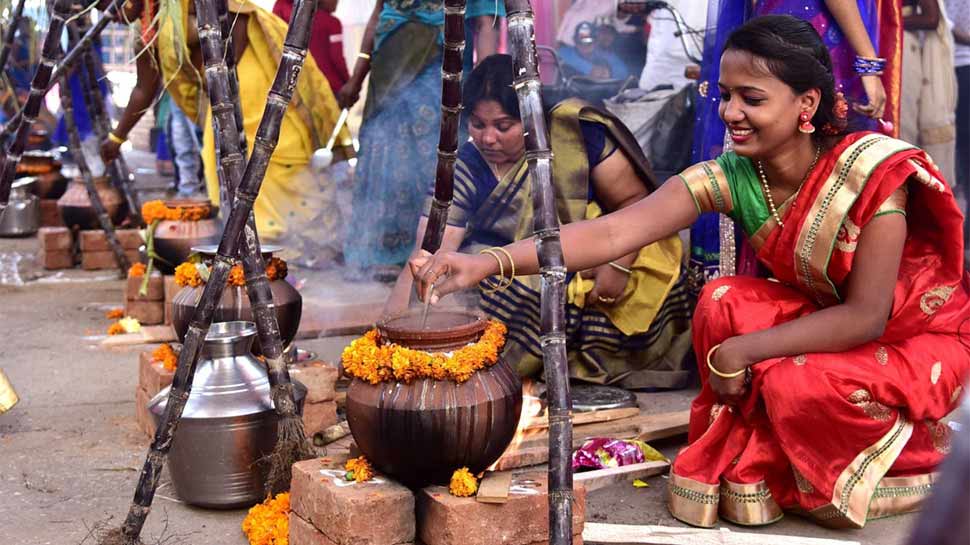
In North India, this period of time takes other names and it is celebrated in different ways: In Uttar Pradesh, for instance, it is called Makara Sankranti. It is considered auspicious to take a ritual bath in a sacred river that day, as many do in Allahabad and Varanasi.
In Gujarat, it is called Uttarayana and it is celebrated in magnificent style with a kite flying festival. In Punjab, it corresponds to Lohri.
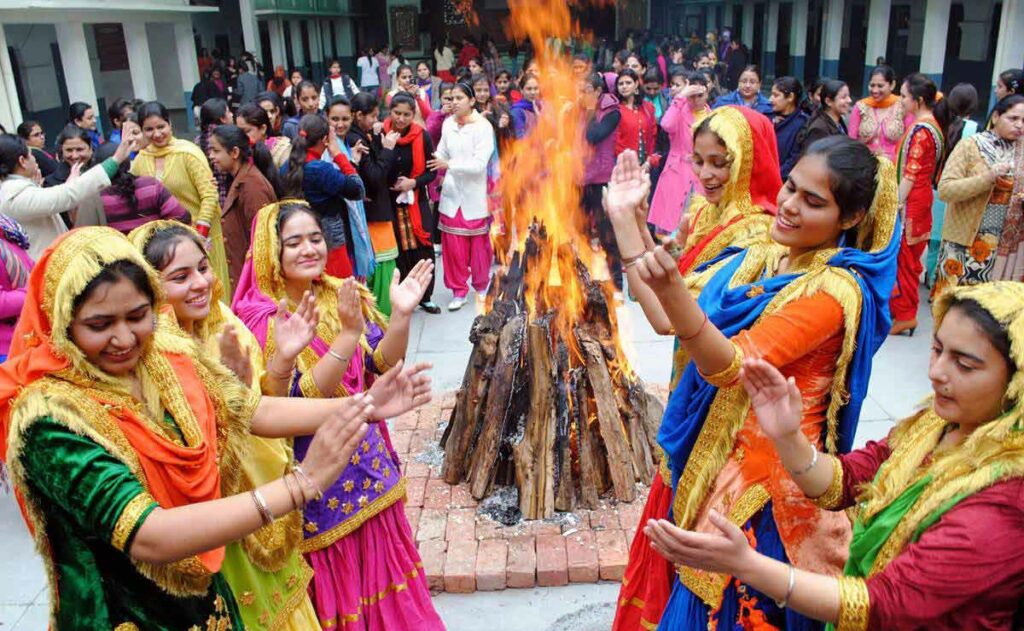
Astrological meaning
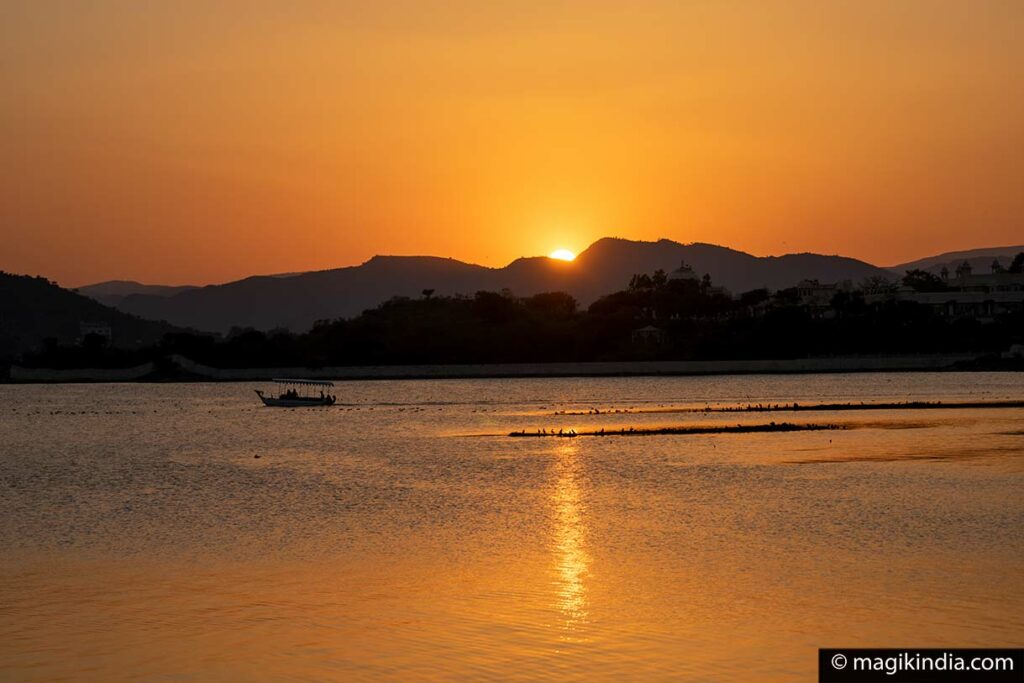
Pongal has an astrological significance too. Under the name of Makara Sankranti it marks the sun’s transition from Dhanur Rasi (Sagittarius) to Makara Rasi (Capricorn).
There are 12 sankranti or transitions in the year, one for each month. Makar Sankranti is the start of Uttarayana, the six months of the sun’s southward progression.
In Hinduism, Uttarayana is considered propitious, unlike Dakshinaayana, when the sun is moving southward. Important events are scheduled during Uttarayana.
The Legend
Boghi, the first day of the Pongal festival, is associated with the legend of Indra, the god of clouds and rain, and Lord Krishna.
The people of Govardhan would worship Indra in a grand way and because of that Indra became very arrogant, thinking he was the most powerful beings in the Universe.

When Krishna heard of this he concocted a plan to teach Indra a lesson. He persuaded the people to worship the Mount Govardhan instead of Indra. Indra was so furious that he sent heavy downpours of rain to flood the land. To protect people, Lord Krishna lifted Mount Govardhan on his little finger and held it aloft over the inhabitants. The rain continued for three days, until Indra realised he was wrong and acknowledged the divine power of Krishna. He asked for his forgiveness and promised to be humble.
Then, Krishna allowed the Bhogi celebrations in honour of Indra to continue. That’s why this day is also called Indran.
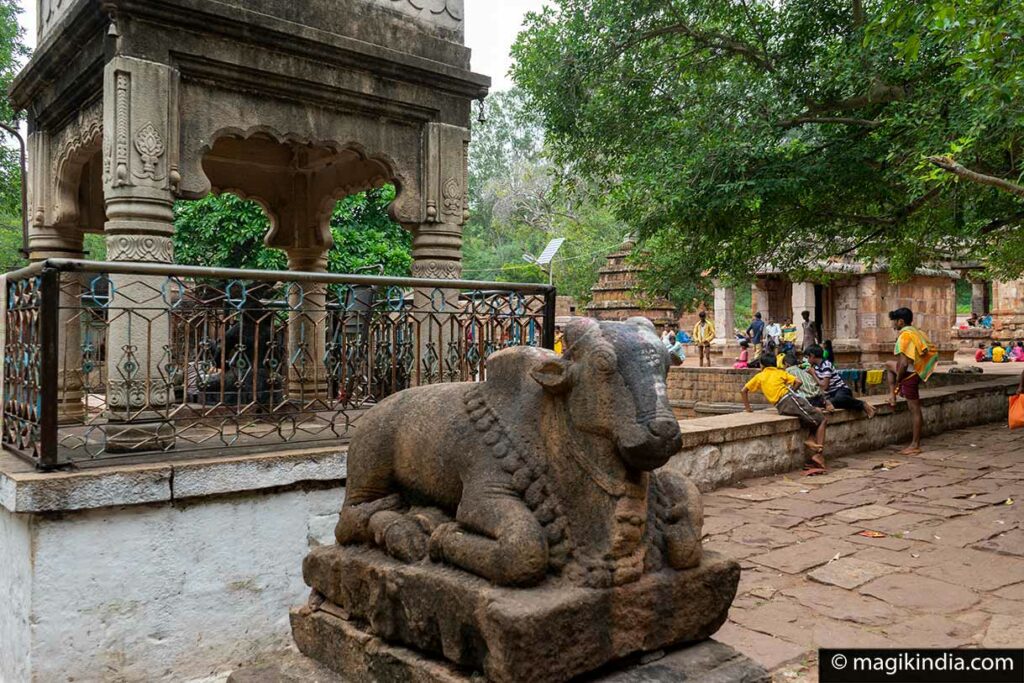
Another legend connects Mattu Pongal, the third day of Pongal, with Shiva.
One day Lord Shiva sent his mount, the bull Nandi, to tell people on Earth to bathe with oil once a day and eat only once a month. But Nandi got confused and told the people to eat every day and bathe with oil once a month.
Shiva cursed Nandi to live on Earth to help humans in the fields.
Meaning and Symbolism
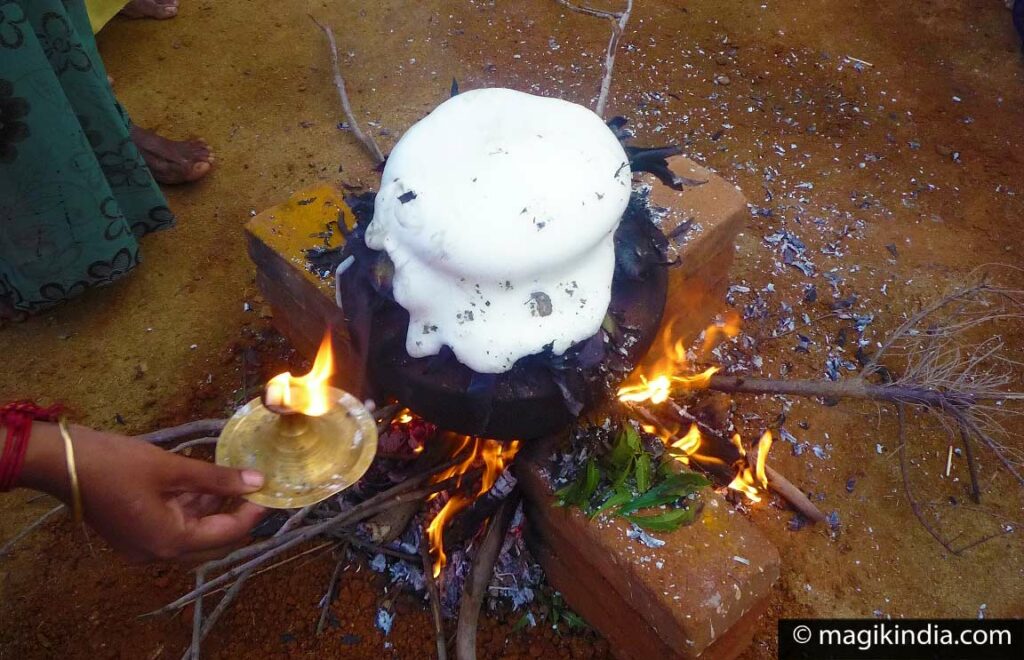
The word ‘pongal’ means ‘to boil over’ or ‘to overflow’. People deliberately let the rice boil over as a sign of abundance and prosperity. When it overflows, people shout “Pongalo Pongal!“
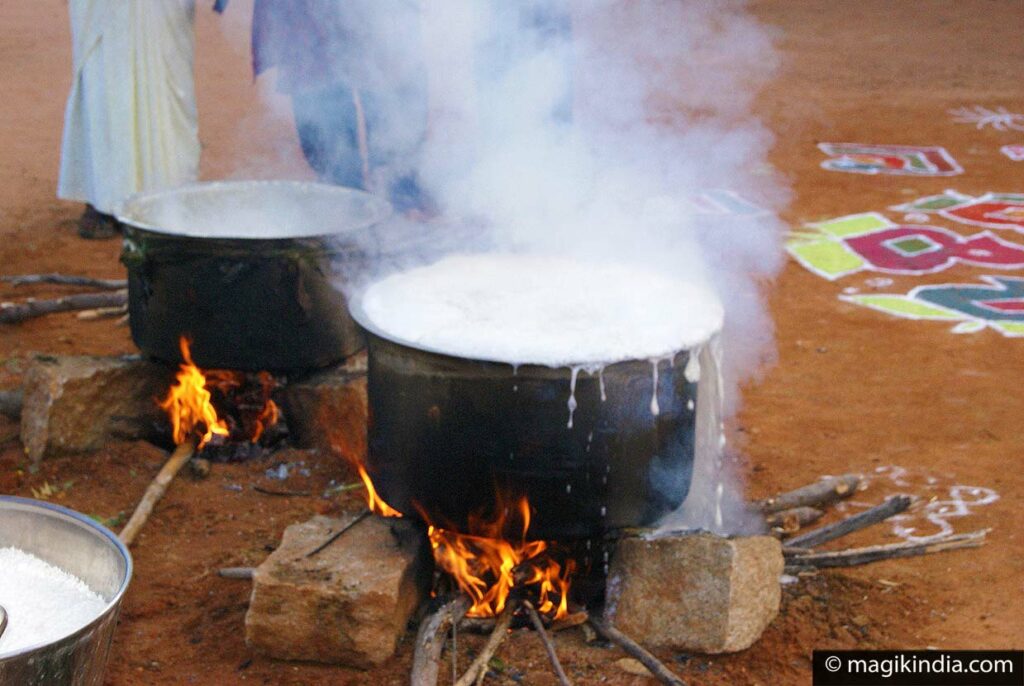
Pongal has also given its name to an Indian dish, a kind of sweet or savoury pudding. The ingredients vary from region to region. For the sweet version, rice is cooked in milk sweetened with jaggery (palm sugar) or molasses. For the savoury version, see the recipe below.
Symbolically, pongal (the dish) combines the five elements or ‘Pancha Bhootha’. Rice represents the land or Bhoomi. It is cooked in water: Jalam. The fire it is cooked on represents Agni, sacred fire. Traditionally, it is cooked in the open air – Vayu (air) and Akasham (the ether).
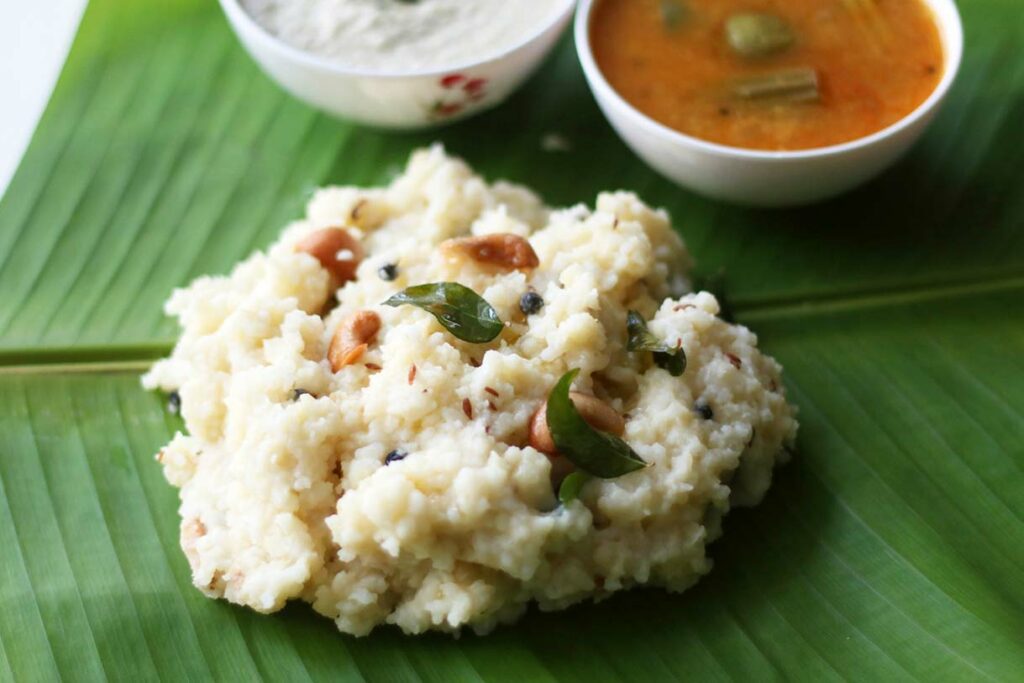
Festival highlights
Traditionally, the festival lasts four days.
Just before the festivities, the houses are cleaned and decorated. Women design kolams, decorative geometric patterns drawn with rice flour, in front of their home. Symbolically, kolams welcome visitors and ensure the household’s prosperity.
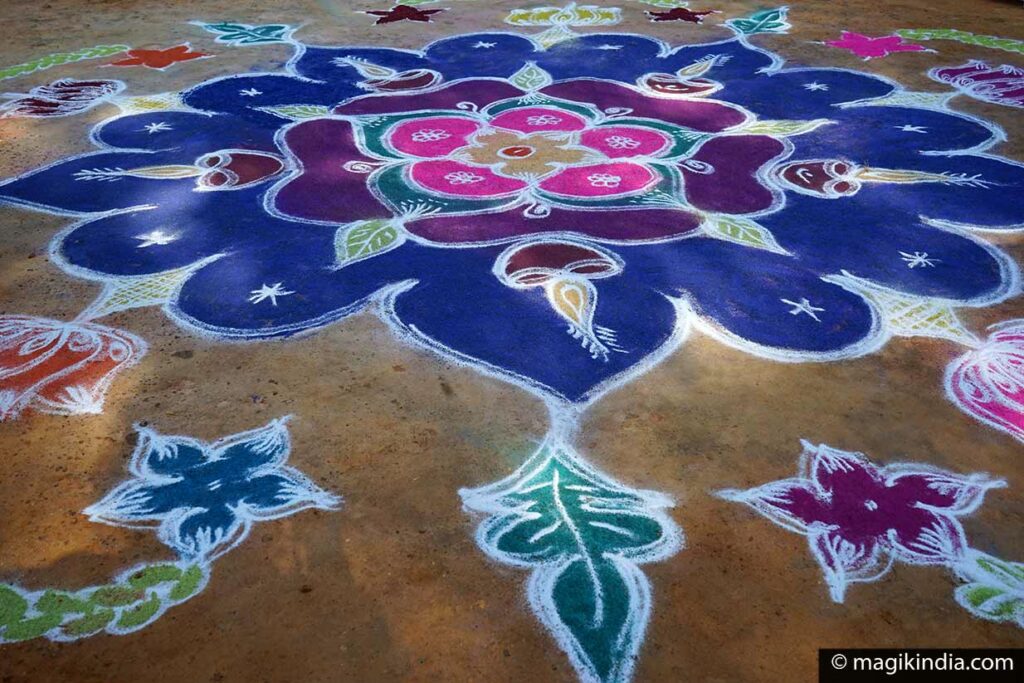
1st day: Bhogi
People burn or throw out old household articles and buy new ones. This marks the start of a new cycle. This first day is celebrated in honour of Indra, the god of clouds and rain.
2nd day: Perum or Surya Pongal
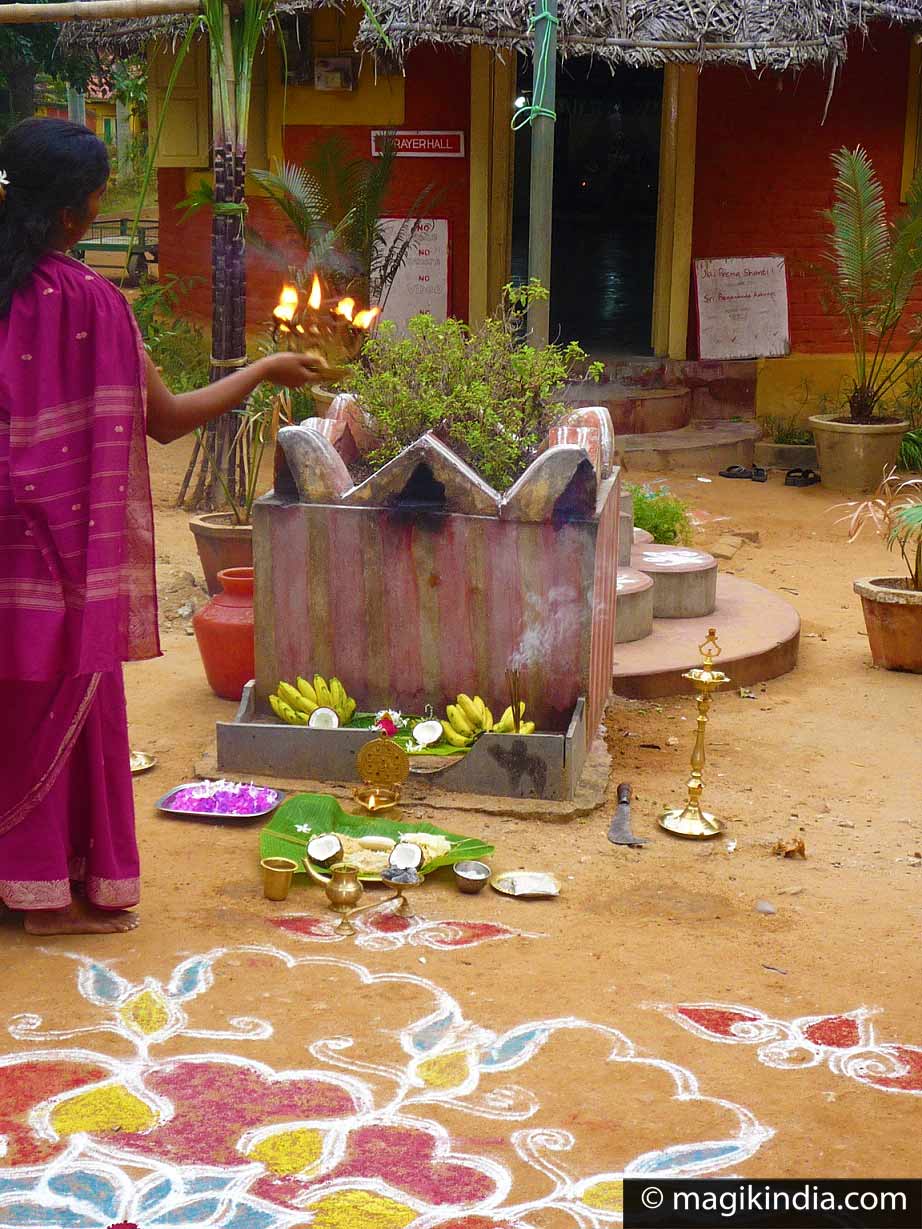
It is the most important day of the festival. On that day, the pongal rice is set to boil and allowed to boil over. People also prepare snacks, visit each other and exchange good wishes. Some people pray and make offering to the sun god Surya.
3rd day: Mattu Pongal or cow pongal
This is the day of thanksgiving to the cattle that contributes to a good harvest. The cows and buffaloes are groomed, garlanded and decorated with colours in their honour, and they are given food offerings.
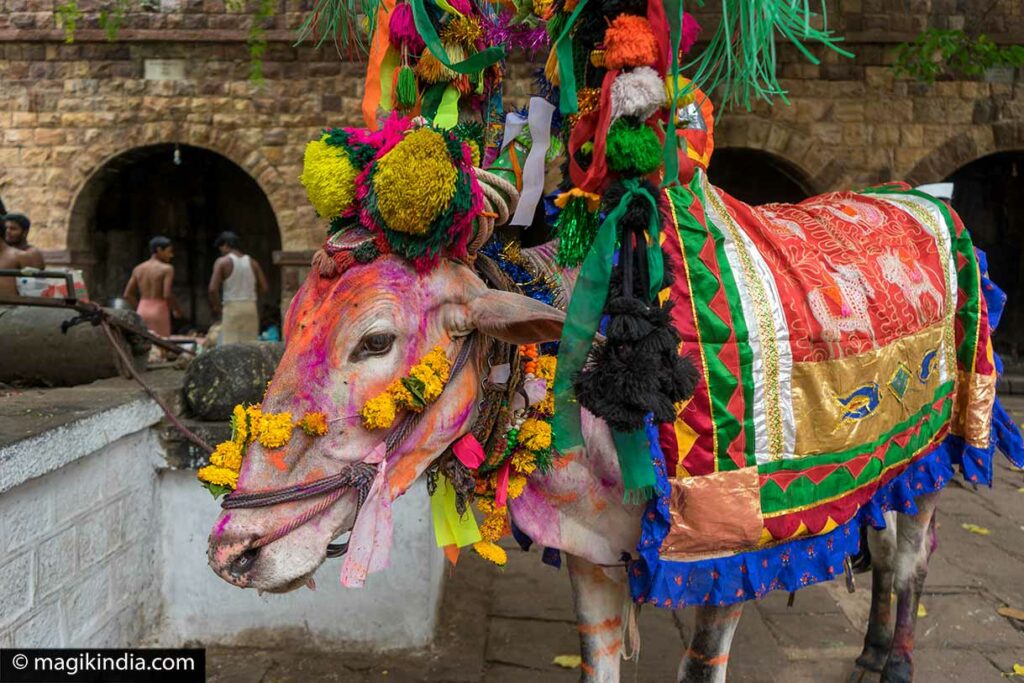
4th day: Kaanum Pongal
This is a day for spending time with friends and family and sharing meals. Traditional dances like kummi or kolattam are danced on this day.
Pongal recipe
This is the Tamil recipe of ‘Ven Pongal’.
For 2 people. The preparation is very fast, about 30 minutes.
- Rice 1 Cup
- Moong Dal 1/4 Cup
- Black Pepper Powder to taste
- Cumin Powder 1 Tbsp
- Ginger Paste 1 Tsp
- Dry Dinger (Sukku) 1 Tbsp
- Hing 1 Tsp
- Cashew for garnishing
- Ghee 2 Tbsp
- Water 6 Cups
- Salt to taste
- Wash rice and dal together and drain nicely.
- In the Rice cooker heat 1 tbsp ghee.
- Add rice and dal. Fry till the ghee coats the mixture.
- Add the rest of the ingredients, except Cashews.
- Add water. Cover and cook.
- Keep testing the water level and stir frequently as it has a tendency to stick to the bottom.
- When rice gets fully mashed garnish with cashews.






